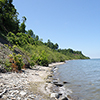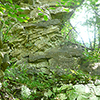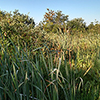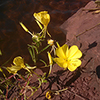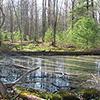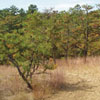Conservation Science
Protecting Pennsylvania’s Plants and Animals
Youghiogheny River Scour
Flooding is a natural disturbance process on all streams, and in the right circumstances, it can help create a unique ecosystem known as scour. You can find patches of prairie-like grasslands on sand, cobble, boulder and bedrock shores in this ecosystem. Scours are rare in Pennsylvania and only occur along free-flowing portions of larger rivers. The Western Pennsylvania Conservancy monitors the plant communities found in scours, especially those found along the Youghiogheny River.
Scour habitat usually forms when material carried by steep tributary streams during heavy rains is deposited as the water slows as it enters the larger river. This material accumulates at and just below the mouth of the tributary, forming a low, rocky area protruding into the river. This area frequently floods and, if the river has enough energy, very few plant species can withstand the scour of those floods. Scour ecosystems are also sometimes found where rivers bend abruptly, exposing the shore on the outer side of the bend to violent forces during flood events. The scour process is especially severe when the debris washing over the habitat includes ice.
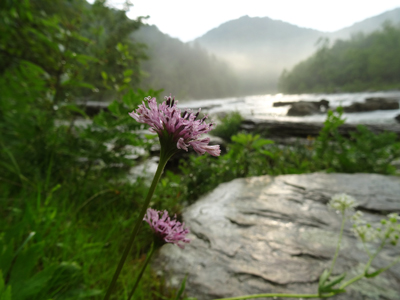
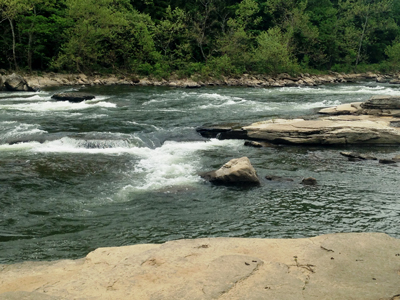
These prairie-like ecosystems are often found along rapids and places where exposed bedrock and large boulders are in direct contact with fast flowing water. Each year, they are battered by intense floodwaters and flowing sheets of ice that scours the floodplains, at times down to the bedrock, and limits the growth of riparian trees.
Flooding is a natural disturbance process on all streams and is important for maintenance of floodplain ecosystems of various kinds. On larger rivers, especially those that carry significant amounts of ice during spring melts, this process is very vigorous, ripping up much of the vegetation, creating the stage for a scour community.
Scour zones share ecological characteristics with riverbanks, floodplains, wetlands and prairies. This combination of conditions leads to a unique grouping of species.
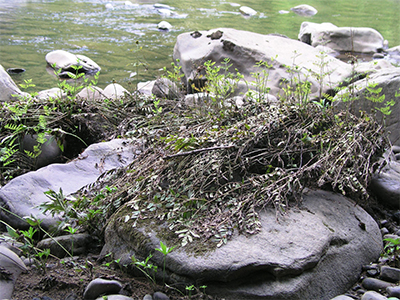
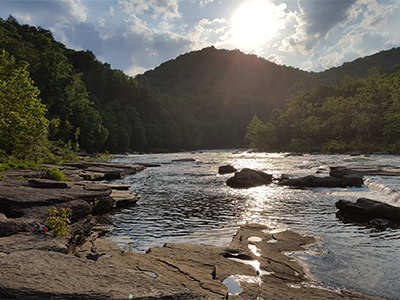
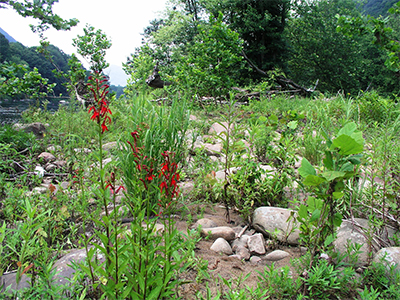
Major threats to riverside scour communities include changes to river hydrology (especially dams), habitat conversion by development, water pollution, trampling in areas popular for recreation, and the establishment and spread of invasive plant species. Often, these threats occur together.
Climate change may also greatly influence the composition of the plant communities of a scour. Without the freeze-thaw and naturally occurring ice-scour, trees like silver maple and sycamore previously unable to grow to full size may flourish and form an overstory. This could result in the riverside being less habitable for some of our rare species, like beautiful Barbara’s Buttons (Marshallia pulchra) that require the open, prairie-like conditions found in a scour.
The steep drop of Pennsylvania’s Youghiogheny River, combined with local narrowing of the channel caused by rock accumulations at the mouths of tributary streams, forms the rapids so popular among kayakers and rafters and contributes to the development of these unique ecosystems. As the Youghiogheny River cuts through Laurel Hill and Chestnut Ridge, it drops considerably – 90 feet in less than two miles just rounding Ferncliff Peninsula.
Ferncliff Peninsula Natural Area within Ohiopyle State Park supports some of the highest-quality river scour habitat in the region. This area also hosts the greatest concentration of globally at-risk plants of any area in Pennsylvania, as well as a large number of species of regional conservation concern. Many of these species are native only in the southern to middle Appalachian Mountains, and reach their northern range limit at or near Ohiopyle.
Scours in the Youghiogheny River Gorge provide habitat for the majority of the rare plants known from the Ohiopyle area. Some of these rare plants are species of global concern, including the beautiful Barbara’s Buttons (Marshallia pulchra). Other plants are classified as regionally rare, often at the northern limit of their range, like pencilflower (Stylosanthes biflora).
NHP biologists have been studying the scour plants of the Youghiogheny River Gorge since the late 1980s, continually finding new occurrences of rare species. We monitor the beautiful Barbara’s button populations on a three-year rotation, and in the process update many other rare plant occurrences. Some of these populations have suffered greatly over the decades. The stresses leading to these declines include invasions by non-native species (especially Japanese knotweed [Reynoutria japonica] and oriental bittersweet [Celastrus orbiculatus]), trampling in high-use areas of the park, and changes in flooding regime as a result of dam management and climate change. We continue to work with the Bureau of State Parks and the Army Corps of Engineers to better understand and address these issues.
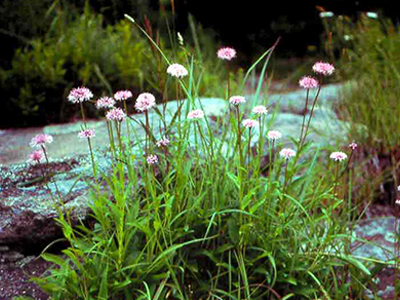
Barbara's button (Marshallia grandiflora)
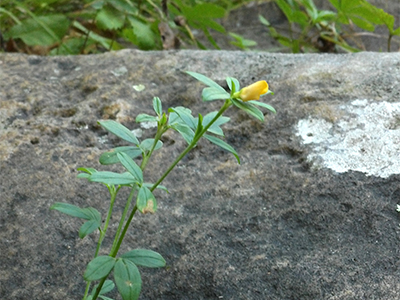
Pencilflower (Stylosanthes biflora)
at Ferncliff Peninsula Natural Area

